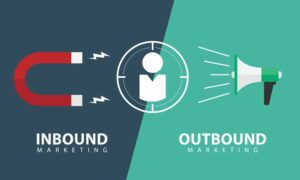There are three ways to scale your business. 1) Get more customers, 2) Get more transactions, or 3) increase the average value of each transaction. The best businesses do all three.
Today we’re going to focus on point number 1: Getting more customers.
While it would be really nice for people to hear about our brands and spend tons of money right off the bat, that’s generally not the way that people buy. People tend to start slowly, test the waters, and if all goes well – THEN they’ll continue to buy from you.
Entry-point offers are probably the most important tool in your tool belt to increase the number of customers that you have.
Let’s dive in.
What is an entry point offer?
An entry point offer is a type of marketing offer. It’s generally a product or service that you can sell for CHEAP that provides such good value that your customers will be excited to do more business with you in the future.
You may be thinking, “Hey wait a minute, I’m not in the business of giving away my product or service for cheap! Why would I do this?”
The reason you would promote an entry-point offer is to do two things:
1) You are converting prospects into buyers. Even though they may just be spending a little bit of money with you at first, that’s still a very important thing. It is much easier for you to sell higher-end products or services to people who have previously purchased from you.
2) An entry-point offer gives you the chance to excite your customers about your brand. (I wrote about this last week – check that out here). Once you have an excited customer, you are well-positioned to cross-sell, up-sell, and re-sell to that customer.
When should you use an entry point offer
Entry point offers can and should be used often in your business as part of an overall customer value optimization strategy. Generally, you should think through each major service or product that you offer, and try to see if you can come up with a low-cost way for the customer to experience that product or service.
This is not a bait and switch – you want to offer something that is complete and whole by itself, but something that generates interest in future purchases.
Let’s say that I have a marketing agency (which I do), and I offer lots of different services (which I do). I might look at my major services – for this example, let’s say digital advertising.
For digital advertising, I might create a comprehensive checklist showing the exact steps we use to audit an ad campaign, create an ad campaign, and optimize on an ongoing basis. We might sell this for something like $9. Is it waaaaay more valuable than $9? Yes, it is. In fact, if it causes any improvement whatsoever in someone’s ad campaigns it will pay for itself many times over.
What this really does is get a prospect used to spending money with me, and it also allows me to create a really great follow-up sequence where we make sure they’re set up for success. We’ll also use the opportunity to pitch a digital ads audit (a more expensive product) and full digital ads management (a much more expensive product). So, again – entry point offers are used to get someone used to buying from you and to give you an opportunity to prove yourself to them.
You can and should have one for every major product or service that you offer, and you may even have several if you sell to different types of customers.
How to create an effective entry point offer
This is a bit of a tough question, as everyone’s entry point offer is going to look different – even in similar industries. It could be a steep discount on your first order for an ecommerce store, it could be a piece of knowledge or training, or it could be a trial or demo of your product.
So rather than dive into specifics, let’s talk about what makes up a good offer.
1) It has to be low-cost. Low-cost can mean different things in different industries, but for most businesses, try to keep it to under $30. Because the concept of low-cost changes by industry, it might be better to think of it as an insane value for the price.
2) It’s got to be easy on you and your team. These are not meant to be money-makers, so if you can automate the delivery of a product or service, that’s best. Notice in my digital ads example that the resource was the entry-point offer, not the audit – we just can’t take the time to do audits for less than $30 – our target entry-point offer level.
3) It’s got to be good. No amount of marketing will help a bad product or service.
So, there you have it. Now that you have a better understanding of entry point offers, you’ll start to notice them EVERYWHERE.
This concept will really only work as part of a larger inbound marketing strategy – in particular when it comes to customer value optimization process – so please make sure to check out our article on that here.





